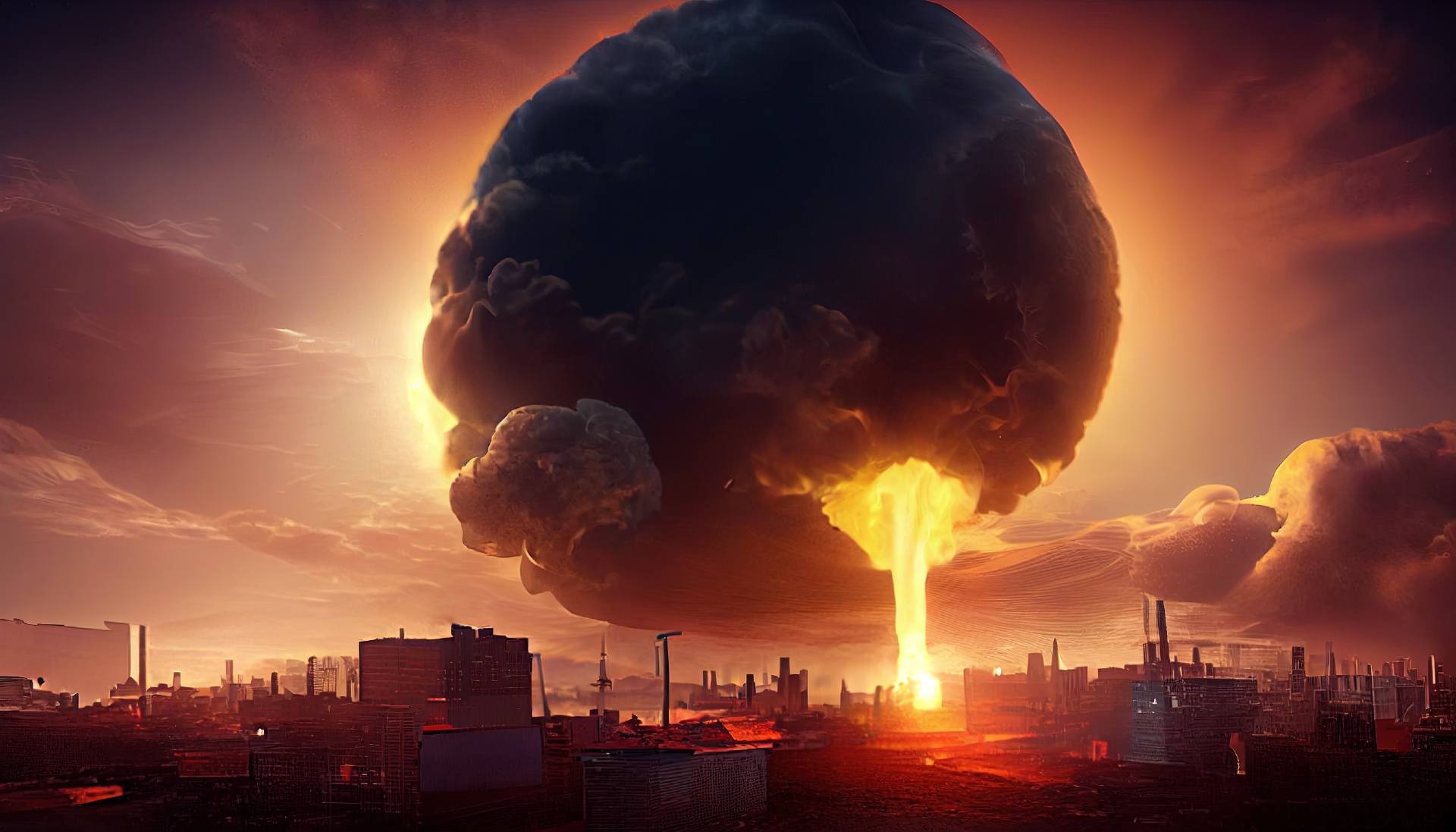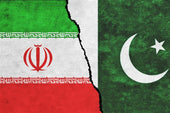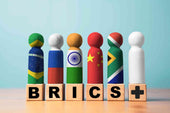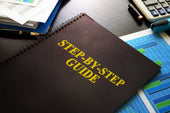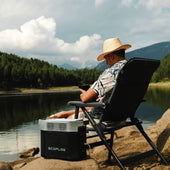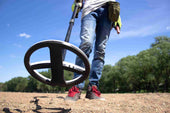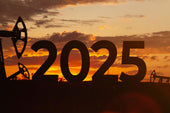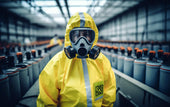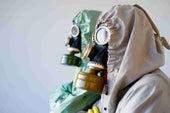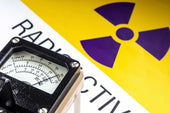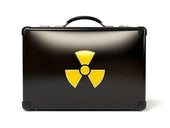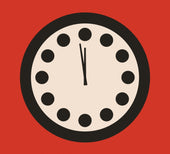Who Were The Key Members Of The Manhattan Project Scientists?
For the billions of people still fearing nuclear weapons, a mushroom cloud represents one of the most horrifying pictures possible. However, the Manhattan Project, one of human history's most important research projects, was finally completed for many others.
DURING WORLD WAR II, the US tried to develop an atomic weapon before Nazi Germany and produced a complex and undoubtedly dreadful legacy known as the Manhattan Project. This is especially true for the citizens of Japan, the only country that has ever been the victim of a nuclear attack.

Others believed that the atomic bomb and the doctrine of Mutually Assured Destruction (MAD) that went along with it were the only means of ensuring long-term peace in the world, even though many famous scientists involved in the Manhattan Project would later feel despair, guilt, and horror over the results of their work.
No matter how one ultimately feels about the atomic bombs that ended World War II, there is no denying that the Manhattan Project was one of human history's most important scientific endeavors.
But who were the scientists behind the Manhattan Project? To answer the question, let’s briefly overview the Manhattan Project.
The Manhattan Project
During the Second World War, the US government's top-secret research and engineering effort that produced the first nuclear weapons was codenamed the Manhattan Project. The project's US Army office was first in Manhattan, New York.
After receiving a letter from the recipient of the Nobel Prize, Albert Einstein, in October 1939, President Franklin D. Roosevelt established a commission to investigate the potential of creating a nuclear weapon. Einstein cautioned the president in his letter that Nazi Germany was probably already working on producing a nuclear weapon.

Additionally, the letter urged the government to support Enrico Fermi's American research on nuclear fission chain reactions.
Roosevelt commanded government representatives to investigate the letter and determine whether creating weapons based on nuclear fission chain reactions was feasible. They returned to confirm that such weapons would be hypothetically feasible and the most powerful ever seen by humans.
The Manhattan Project began working in August 1942.
The Beginning
Columbia University received a $6,000 grant from the US Navy to support Fermi's investigation into fission chain reactions. Fermi, Leo Szilard, Eugene Booth, John Dunning, and others used the money to buy graphite, which they then used to create the first fission reaction in the US.
Though still on a small scale, the US government soon expanded funding for uranium and plutonium fission reactions.
Frisch and Rudolf Peierls in the UK determined that a "critical mass" of roughly 20 lbs (9.07 kg) of uranium was needed to trigger a fission chain reaction. When they delivered this information to the UK government, it authorized its own atomic weapons development because it reduced the material needed to a size that could fit a conventional bomber.
The US and the UK started exchanging atomic weapons research to hasten their development even before the US formally entered the war since the UK had advanced further than the US in its atomic weapons research by late 1941.
Roosevelt assigned the US Army to oversee the project because of that branch's expertise in extensive research projects. After the US entered the war in December 1941 due to the bombing of Pearl Harbor, funding for the Manhattan Project got underway.
Project Y
The Manhattan Project's "Project Y," which would design and construct the atomic bomb itself, was directed by J Robert Oppenheimer, a theoretical physicist from the University of California. Oppenheimer needed to gain laboratory management expertise, but many other contenders were already committed to other projects and couldn't be spared.
Security concerns arose due to his relationships with known communists, including those with his wife and alleged mistress. However, after speaking with Oppenheimer, these concerns were alleviated, and he was given the initiative to construct the US atomic weapon.
The project's scope was immense. It involved more than a dozen locations across the US and material, particularly uranium, from Canada and the Belgian Congo.
The location chosen for Project Y's laboratory would eventually become the Los Alamos National Laboratory. However, given the project's top-secret nature, it was listed in official documents as "Site Y" or "The Hill. " Oppenheimer proposed a location close to the Los Alamos Ranch, adjacent to the Sangre de Cristo mountains in New Mexico.
Work at Los Alamos Laboratory

Six thousand scientists and engineers from prestigious universities and business research facilities were working on creating the first nuclear weapon in the world by 1944.
Major General Leslie Groves supervised the Manhattan Project on behalf of the US government.
Private businesses assisted in preparing the weapons-grade uranium and other components required to manufacture the bombs, most notably DuPont—reactors in Oak Ridge, Tennessee, and Hanford, Washington, processed nuclear materials.
At its height, the Manhattan Project employed 130,000 Americans at 37 locations throughout the nation.
The first nuclear weapon was set off on July 16, 1945, in the early morning at a military test site in Alamogordo, New Mexico.
After the explosion's flash of incredible brightness, a huge mushroom cloud rose from the desert's floor. House windows broke more than fifty miles away.
Hiroshima and Nagasaki
Two months before the atomic bomb's completion, in May 1945, the Allies defeated Germany. Nevertheless, the war with Japan raged on, and in August 1945, it appeared that an invasion of Japan itself could be required to force the Japanese to submit.
Military advisors to President Harry S. Truman cautioned that such a land conflict would result in the deaths of many Japanese military personnel and civilians and tens of thousands or maybe hundreds of thousands of young men serving in the US Armed Forces.
Truman ordered the bomb on Japan after receiving no response to his request that "prompt and utter destruction" would occur if the Japanese did not submit willingly.
The first atomic bomb was dropped on Hiroshima on August 6, 1945, by the American B-29 bomber "Enola Gay." With the equivalent force of 12,500 tons of TNT, the weapon detonated over the city.

Just a few minutes earlier, "the city" had been there. ..but it was gone entirely," a witness remarked. Within months of the Hiroshima bombing, about 140,000 people perished suddenly, suffered radiation-related illnesses, or died from other causes.
The day after Hiroshima was bombed, Truman again begged for surrender, but the Japanese government rejected him. After the United States detonated a second bomb on the Japanese city of Nagasaki on August 9, roughly 80,000 people perished. The two atomic explosions resulted in 210,000 civilian deaths in all.
The Japanese government signed an unconditional surrender six days after the Soviet Union launched a war on Japan. The Second World War was over.
The Cold War was one of the many effects of the atomic bomb's creation that would last throughout the twentieth century. The Soviet Union received intelligence on the nuclear program via spies working within the Los Alamos research and development center, most notably the physicist Klaus Fuchs, who helped the Soviets create their atomic weapon by 1949.
The Scientists of the Manhattan Project

The Manhattan Project would not have been possible without the dedication and expertise of hundreds of scientists and engineers who either directly contributed to it or widely contributed to nuclear science.
Many scientists and engineers who worked on the project had interesting backstories that helped them arrive at their work on such an innovative military undertaking.
Under the intense pressure of World War II, they made several ground-breaking scientific discoveries in a surprisingly short period that ultimately helped usher in the atomic age.
Below are the ones who played the most vital roles.
J. Robert Oppenheimer

You may be familiar with J. Robert Oppenheimer. He was one of the most well-known scientists involved in the Manhattan Project. His essential contributions as a physicist advanced the development of the atomic weapon, earning him the title "Father of the Atomic Bomb."
In June 1942, he was appointed director of Los Alamos, whose main focus was nuclear fission. The United States exploded two atomic bombs less than three years after Oppenheimer was given control of direct weapons development. Oppenheimer was excited about the security that nuclear weapons and power could provide. Still, he also believed keeping it organized through a body like the UN was crucial to prevent the inevitable nuclear arms race and future wars.
He once said, "Science is not everything but very beautiful."
Enrico Fermi
A scientist from Italy (later an Italian-American) named Enrico Fermi was instrumental in the Manhattan Project.
One of his most outstanding achievements as a physicist was developing the Chicago Pile-1, the first nuclear reactor in the world. Fermi performed numerous previously unimagined feats.
For his work on induced radioactivity by neutron bombardment and the discovery of transuranium elements, he was given the 1938 Nobel Prize in Physics.
The US government acquired each nuclear power-related patent Fermi and his colleagues filed. Because of these critical contributions, some of his successors were able to make other significant inventions.
Ernest Lawrence

American nuclear scientist Ernest Lawrence is renowned for his work on the Manhattan Project's uranium-isotope separation. In 1939, he was awarded the Nobel Prize in Physics for developing the crucial particle accelerator known as the cyclotron.
Leo Szilard
Leo Szilard, a physicist and inventor of Hungarian descent, invented a nuclear fission reactor in 1934 and a nuclear chain reaction in 1933.
When Szilard learned about the German discovery of nuclear fission, he hypothesized that uranium might be a substance capable of supporting a chain reaction.
This is when he enlisted the aid of additional scientists, borrowed money from a fellow inventor, and began his quest to demonstrate the viability of a chain reaction. They established this and more, although they had mixed feelings about their results.
He decided to write President Franklin D. Roosevelt a letter in which he informed him of Germany's results, shared his research, and suggested that the government fund research into nuclear reactions and even nuclear weapons.
The Manhattan Project was ultimately started as a result of this letter.
Hans Bethe

Hans Bethe clarified the shock-wave theory with Edward Teller and worked on radar at the Radiation Laboratory as part of the war effort. He also developed a hypothesis of armor penetration.
After being invited to Los Alamos as part of the Manhattan Project, he was appointed chief of the Theoretical Division.
Along with Richard Feynman, he worked on implosion and radiation propagation issues and computed explosive yields.
Richard Feynman
Richard Feynman was a gifted physicist who worked for Los Alamos' Theoretical Division and temporarily for Oak Ridge's nuclear safety.
He became one of the world's best-known scientists thanks to his later work in quantum computing and nanotechnology, his "Feynman diagrams" that described the behavior of subatomic particles, his published lectures, and his autobiographical books, "Surely You're Joking, Mr. Feynman" and "What Do You Care What Other People Think?"
Leona Woods Marshall Libby

Leona Woods Marshall Libby was one of the few female scientists who worked on the Manhattan Project. She was the sole woman on the crew that built the Chicago Pile, the first nuclear reactor, and she played a significant role in the construction and upkeep of the Hanford plutonium production facilities.
Ernest Wilkins, Jr.
J. Ernest Wilkins, Jr., was the youngest student admitted to the University of Chicago. After receiving his Ph.D. at 19, Wilkins started working on the Manhattan Project with Enrico Fermi, Eugene Wigner, and Arthur Compton.
Louis Alexander Slotin

Louis Slotin, a physicist working on the Manhattan Project, critically saw both the CP-1 and X-10 approaches. During a critical experiment at Los Alamos in May 1946, Slotin received a deadly radiation dosage and passed away nine days later.
Klaus Fuchs
Theoretical physicist Klaus Fuchs from Germany was a notorious Soviet spy involved with the Manhattan Project.
Although Fuchs provided information to the Soviets during the Manhattan Project, he also made significant theoretical contributions to the creation of the atomic bomb, such as developing the methods required to implode the crucial fissionable core in the original designs.
The United States Army commended him for his work on one of the first nuclear implosion bombs, code-named "Fat Man," which was dropped on Nagasaki.
Because of his success, Fuchs received a high-level security clearance and explicit access to many of the Manhattan Project's crucial components.
Fuchs, however, was forced to divulge specific information regarding the Trinity Test that took place in July 1945, implosion techniques, and his long-hoarded communist sentiments.
According to some analysts, Fuchs' information allowed the Soviet Union to create its atomic bombs at least a year earlier than otherwise. Fuchs was expelled in 1949 after being exposed as a spy and received a 14-year prison term (though he only served nine).
Edwin Mattison McMillan

Edwin McMillan effectively synthesized the first transuranium element, neptunium, and was awarded the Nobel Prize in 1951. During the Manhattan Project, McMillan studied implosion techniques at Los Alamos.
Edward Teller
The term "father of the hydrogen bomb" is frequently used to refer to Edward Teller. Teller, who worked on the Manhattan Project at Los Alamos before the hydrogen bomb was developed in 1951, significantly impacted Roosevelt's decision to launch the project.
Glenn Theodore Seaborg

Glenn Seaborg's 1941 discovery of plutonium significantly influenced the Manhattan Project's development of atomic weapons. In 1951, he received the Nobel Prize for his contributions to nuclear research and development.
Maria Mayer
In 1942, Maria Mayer, the first female nuclear physicist to win the Nobel Prize, began working on the Manhattan Project. She examined the chemical and thermodynamic properties of uranium hexafluoride and the viability of photochemical reactions for isotope separation.
Luis Walter Alvarez

Luis Alvarez worked in the Met Lab at the University of Chicago, contributed to the Manhattan Project in secret in Los Alamos, and observed the Hiroshima bombing from a B-29 Superfortress.
Lise Meitner
Nuclear fission was discovered in 1938 by physicists Lise Meitner and Otto Hahn, Fritz Strassmann, and Otto Frisch. Meitner vehemently opposed using her research to create an atomic bomb and declared she would not participate in the Manhattan Project.
Chien Wu
The First Lady of Physics, Chien Wu, joined the Project in 1944. Wu collaborated with James Rainwater in a team under the direction of William W. Havens Jr., who was tasked with creating instrumentation for radiation detectors. Wu was a superb experimenter in physics. A physicist said that if Wu had experimented, it would have been accurate in the 1950s.
Harold Urey

Another notable scientist, Harold Urey, suggested using the diffusion method to enrich uranium, which helped advance fission processes.
This method, created at Columbia University, involves pushing uranium isotopes across semipermeable membranes. After several steps, uranium-235 and 238 are separated into their pure forms.
The Manhattan Project would eventually acknowledge and use this technique, and enormous plants at Oak Ridge Laboratories were used to enrich uranium that would subsequently be used in the first atomic weapon to be detonated.

